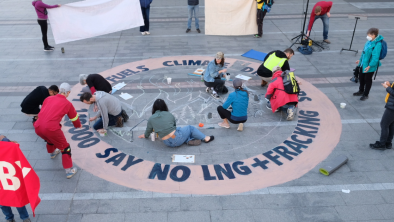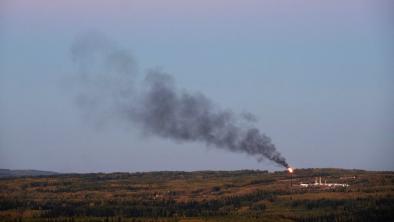Lively crowd opposes power project
Coast Reporter
A public meeting organized at the Roberts Creek Hall Tuesday night drew a vocal crowd that mostly opposed a proposed run-of-river power project in the Tzoonie River watershed.
There were more statements of resistance than questions regarding the private, 62-megawatt project proposed by Stlixwim Hydro Corp. “It’s about time we started rallying as a community. The Tzoonie is one of the last untouched areas on the Sunshine Coast,” said Bob Price, a part-time resident of Narrows Inlet, as the crowd erupted in support.
Among the roughly 100 people who attended the presentation were several representatives from local governments, with the exclusion of the Sechelt Indian Band (SIB) council, through whose traditional lands the Tzoonie flows.
“We were mistaken in not inviting them here, but we are going to talk to them,” said Dan Bouman, executive director for the Sunshine Coast Conservation Asso-ciation (SCCA).
SIB councillor Jordan Louie attended the meeting in order to hand deliver a letter to Bouman on behalf of the Band council, though he did not disclose its content.
Powell River-Sunshine Coast MLA Nicholas Simons moderated the meeting.
Statements were given by the event hosts and sponsors: Bouman; Sage Aaron, communications officer for the Canadian Office and Professional Employees Union (COPE) local 378; Gwen Barlee, policy director for Wilderness Committee (WC); and Louis Legal, co-chair of the Council of Senior Citizens Organizations-Sunshine Coast chapter (COSCO).
A video, courtesy of Save Our Rivers advocacy group, highlighted everything that SCCA, COPE 378, WC and COSCO are worried will go wrong and what they perceive is just plain wrong with this form of power generation. Their concerns are based on other run-of-river projects, though none cited are owned by the proponent in the Tzoonie project.
Barlee told the audience that the Sunshine Coast is “ground zero” for the influx of private power project applications.
“On the Sunshine Coast there are 186 [rivers] staked by private companies,” she said. “We are not against green power. Energy deregulation is not green power … The accumulative impact is not being looked at. Wilderness Committee supports green energy that is regionally planned, environmentally appropriate, acceptable to First Nations and publicly owned.”
The proposal put forward by Stlixwim would be comprised of six separate facilities on unnamed creeks that empty into the Tzoonie River and would be connected by one transmission line. The company purposefully lumped the projects into one to trigger an environmental assessment (EA) that occurs once a project hits the 50-megawatt threshold.
At a public meeting in December, hosted by Stlixwim Hydro Corp. and Environmental Assessment Office, Peter Schober, part owner for the proposed project, said, “We chose to get into the EA process, which costs a bunch more money, but we wanted to know the cumulative effects [on the environment]. We want to do the right thing.”
Schober and a few others related to the Stlixwim project were present at Tuesday night’s meeting, but opted to listen rather than speak when Simons offered them the opportunity.
Other concerns about the Stlixwim proposal were lake storage that would alter water levels, the divergence of stream flow at multiple points, damage to habitat that supports such wildlife as grizzly bear, marbled murrelets and mountain goats and the privatization of wild lands and water.
Lawrence Chambers, who said he considers himself neutral on the matter, was the only person who challenged the sponsors for using a “broad brush approach that everything is bad” and asked if they had visited the McNair project that is owned by the proponents and asked how it compared to using coal or gas plants.
Simons took the questions and said McNair could not be compared to the Stlixwim project because of its bigger overall impact.
The sponsors argued an eight-month EA process is not sufficient, but in a follow-up interview with Coast Reporter, Schober said they have been collecting data in numerous areas of the EA for up to six years to apply to the official eight-month process.
Except for a “couple of kilometres,” Schober said they are reusing road access already in the area. As for the lake levels that will be drawn down significantly, Schober said they have used automated submarines to view the alpine lakes and there is no life in them to harm.
Schober added they have a “signed participant agreement” with the Sechelt Nation and are using Aboriginal staff for many of the jobs related to the project.
As for the 40-year water licence, Schober said they are obliged to try to sell it back to BC Hydro, which is a risk if new forms of energy are created in the interim and make run-of-river obsolete.
The debate continues as the next public meeting hosted by the proponents and Environmental Assessment Office at the Egmont Community Hall on Jan. 14 from 5 to 8:30 p.m. The presentation begins at 7 p.m.


